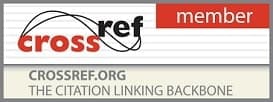E-ISSN: 2617-9229|P-ISSN: 2617-9210

Printed Journal | Refereed Journal | Peer Reviewed Journal
Peer Reviewed Journal
Vol. 8, Issue 2 (2025)
Measuring and analyzing the relationship between the exchange rate gap and current spending in Iraq for the period (2004-2023)
Ghofran Ramez Mohammed Jayad and Muhannad Khalifa Ubaid
Since the US invasion of Iraq in 2003, the Iraqi economy has undergone profound changes in its financial and monetary structure. This is due to the security, political and economic turmoil, which had direct effects on the exchange rate balance and the mechanisms for implementing monetary and fiscal policy. The exchange rate gap has become a major structural issue in the Iraqi economy, as this gap is represented by the continuous difference between the nominal exchange rate, which is determined by the Central Bank of Iraq, and the parallel exchange rate (black market), which led to the emergence of wide challenges in controlling public spending and budgeting.
The results showed that the gap in the exchange rate increases significantly in times of crises and shocks such as low oil prices or the application of sanctions, which causes a significant fluctuation in the cost of government expenditures, especially with regard to government revenues and projects that depend on the foreign market. This gap also contributes to the disturbance of financial estimates when preparing the general budget and leads to an imbalance between expenditures and revenues, which sometimes leads to the emergence of unplanned financial deficits. It became clear that the Central Bank's intervention through the currency sales window did not contribute to achieving the desired stability, but rather caused the parallel market to expand in size and deplete the country's foreign exchange reserves, The analysis also showed that the lack of coordination between fiscal and monetary policy has increased the impact of this gap, as fiscal policy when preparing budgets was based on inaccurate exchange rates that did not match the Iraqi reality. The study calls for the importance of developing the general budget preparation mechanisms to be flexible, diversified and able to deal with several exchange rate scenarios, strengthening the relationship and interdependence between monetary policy and public finance and gradually moving towards the adoption of a more flexible exchange rate controlled by effective monetary tools, while the study calls for focusing on revitalizing and developing national production and diversifying other non-oil revenues to reduce the direct impact of exchange rate fluctuations.
Pages : 118-128 | 249 Views | 115 Downloads

How to cite this article:
Ghofran Ramez Mohammed Jayad, Muhannad Khalifa Ubaid. Measuring and analyzing the relationship between the exchange rate gap and current spending in Iraq for the period (2004-2023). Int J Finance Manage Econ 2025;8(2):118-128. DOI: 10.33545/26179210.2025.v8.i2.564





 Other Journals
Other Journals

